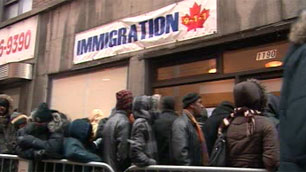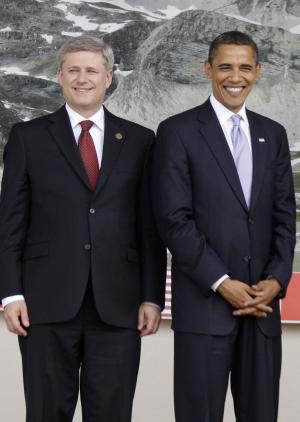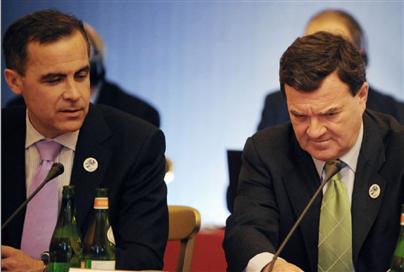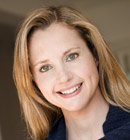Be wary of Haiti immigration scams: officials
Canadian immigration officials are warning members of Montreal’s Haitian community to be wary of companies promising to help accelerate the immigration process for their loved ones affected by last week’s earthquake.
For a second day in a row, hundreds of Montrealers have queued in front of the Montreal offices of immigration consulting firm Immigration International 911 Inc.
The law firm has offered its assistance, purportedly free of charge, to those hoping to help family members come to Canada. The group has even advertised on a local Haitian radio station touting its services.
Style Léon was among those who had been waiting in the lineup which began forming around 5 a.m. on Tuesday.
Léon wants to sponsor her husband and mother-in-law who are in the area affected by the earthquake.
“They have nowhere to go,” Léon said. “They’re on the street, and … [she] is diabetic.
“There is no food, there is no water, there is nothing,” Léon said.
The federal government has promised to accelerate the process for those seeking to sponsor family members but the process is confusing, Léon said.
“Everybody’s telling different things, different papers, different documents. But we don’t really know what’s going on.”
Officials asked to intervene
Montreal-based immigrant and refugee groups said they hoped the authorities would intervene to protect any potential victims of fraud.
“In these times there are unfortunately always certain individuals … who try to take advantage of the situation,” said Rivka Augenfeld, the head of a Quebec coalition of refugee and immigrant groups.
Augenfeld said she could not comment on the specific case of Immigration International 911 Inc., except to say what she saw “is to be deplored.”
“We don’t know who it is because if you go on their website there is not one name to be read,” Augenfeld said.
No one from Immigration International 911 Inc. was available to comment Tuesday.
Immigration officials have previous knowledge of the company, said Albert Deschamps, Citizenship and Immigration Canada’s regional director general for Quebec.
“We’re quite concerned with the way people have been showing up at this consultant,” Deschamps said. “We’re hoping that they are not hearing from this firm that [the firm] can actually accelerate the process of immigration applications because that is not the case.”
Federal Immigration Minister Jason Kenney has said the government will speed up the process for immigrants from Haiti, but immigration consultants cannot push the process along any faster, Deschamps says.
Take our FREE Online Assessment Today!
Socialize with Abrams & Krochak
Harper to reveal G8, G20 agendas at Davos forum
Prime Minister Stephen Harper has travelled to Davos, Switzerland to attend the World Economic Forum, where world leaders will brainstorm the best way to combat the current financial challenges facing the global economy.
Harper will spend the next day and a half in Davos, where he will mingle with business executives, other world leaders and academics at the annual agenda-setting conference.
While the forum will see leaders debate a number of topics — including disaster aid in the aftermath of the devastating earthquake in Haiti — the focus clearly remains on the global economy, at a time when employment remains high and governments are becoming less inclined to bail out troubled banks and industries.
In a statement released Tuesday, Harper said his government will stick to its stimulus plan and will continue to fight forms of trade protectionism, as it previously committed to doing.
On Thursday, the prime minister will address the forum and reveal his agendas for the upcoming G8 conference in Huntsville, Ont., and the G20 conference in Toronto.
In his Tuesday statement, Harper said he will push to improve the health of women and children at the G8 summit — a cause he believes is of increased importance in the aftermath of the global recession.
Citing statistics that suggest a half-million women die during pregnancy or childbirth each year, Harper said there is a “pressing need” for action, especially when such mortality can be avoided through better nutrition and medical treatment.
“This is simply not acceptable. The United Nations had hoped to reduce the number of deaths related to pregnancy by 75 per cent by 2015 as part of its Millennium Development Goals. It now appears this target will go unfulfilled,” Harper said.
“What makes it worse is that the bulk of the deaths during pregnancy — experts claim as many as 80 per cent — are easily preventable. There is a pressing need for global action on maternal and child health.”
As for the G20 summit, Harper plans to highlight the need for member countries to reform their banking systems in harmony and to continue with stimulus until worldwide labour markets have fully recovered from the global financial crisis.
Take our FREE Online Assessment Today!
Socialize with Abrams & Krochak
Solid growth predicted for T.O.’s economy in 2010
Toronto is poised to have one of the fastest-growing city economies in 2010, says a new study from the Conference Board of Canada.
In a report released Wednesday, the private think tank projected 3.5 per cent growth in Toronto’s economy, mainly led by a rebound in construction and manufacturing.
“Manufacturing output is expected to increase in Toronto this year for the first time since 2005,” it said in a news release.
Of the major Canadian cities, only Vancouver is poised to grow faster, with 4.5 per cent growth projected. The main driving factor there is the 2010 Winter Olympics, which begin on Feb. 8. But consumer spending and housing construction are also expected to be strong.
Vancouver’s economy had declined by 1.8 per cent in 2009.
However, Kitchener is predicted to have the third-highest growth, with 3.3 per cent expansion. Better manufacturing prospects are being credited.
The good news in Ontario extends to other cities hard-hit by the recession and longer-term manufacturing woes.
Oshawa is predicted to have 3.2 per cent growth in 2010. “After two years of declining GDP, Oshawa’s economy will benefit from the worldwide recovery now underway, especially in its key auto manufacturing industry. Housing starts are expected to double from 2009 levels, which will boost the construction sector,” it said.
Hamilton has seen its economy shrink since 2007, but three per cent growth is projected for this year.
“The manufacturing and construction downturns in the (Hamilton) CMA appears to have hit bottom — in fact, manufacturing output is expected to grow for the first time in eight years,” it said.
Windsor has taken some of the hardest knocks of any city in the country in the past few years, yet the news is also good there.
“Windsor’s economy can expect to grow for the first time in four years. An improved auto outlook and a combination of higher housing starts and non-residential projects will lead to growth of 2.6 per cent in 2010,” it said.
London should see 2.5 per cent growth, but that won’t be enough to offset its job losses of 2009.
St. Catharines-Niagara is expected to post the first growth in manufacturing output in a decade, and its housing market should recover from a five-year slide. This should lead to 2.4 per cent growth.
Sudbury should see 2.6 per cent growth, but that is put in doubt by the continuing strike at Vale Inco.
Thunder Bay has seen its economy decline for the last four consecutive years. Its economy is only expected to grow by 0.8 per cent. “Although the ‘old’ economy (particularly forestry) continues to struggle, diversification into medical technologies is expected to start paying off,” it said.
Ottawa-Gatineau is expected to grow by 3.2 per cent while Kingston should grow 2.5 per cent. The public sector in both places helped those cities dodge the worst of the recession, it said.
Take our FREE Online Assessment Today!
FREE ASSESSEMENT
Socialize with Abrams & Krochak
• AKCanada
• Facebook
• YouTube
• Twitter
Wife of minister given Order of Ontario
Seven medical doctors top the list of inductees into this year’s Order of Ontario, including the wife of a freshly minted cabinet minister.
Dr. Samantha Nutt, a co-founder of the charity War Child Canada, received the honour Monday just one week after her husband, Dr. Eric Hoskins, was
sworn in as Ontario’s minister of citizenship and immigration.
Six other medical doctors besides Nutt were also inducted this year.
They are: Philip Berger, an expert in urban medicine, addiction and homelessness; cancer specialist Helen Chan; Kellie Leitch, a pediatric orthopedic surgeon; James Orbinski, a founder of Doctors Without Borders; diabetes researcher Mladen Vranic; and Anne-Marie Zajdlik, a family physician and AIDS activist.
In a letter thanking Lt.-Gov. David Onley for adding her name to the prestigious list of winners, Leitch wrote of one of her patients, Emma Healy.
“I understand I was nominated for this award by Emma for my work,
along with my colleagues, in developing the Paediatric Surgery Department at the Children’s Hospital of Western Ontario,” Leitch wrote.
“Emma is a brave, 14-year old girl on whom I performed a significant surgery. Emma knows that having the Paediatric Surgery Department in London will help ensure that patients like her will not have to travel great distances from home to access vital medical services.”
Sports and media mogul Paul Godfrey, broadcaster Ken Shaw and Levente Diosady, whose work with food process engineering has helped to remedy iodine deficiency around the world, were also honoured.
“It’s an award I was surprised to receive and I’m delighted,” Godfrey said. “How could you not be?”
Godfrey, recently picked by Premier Dalton McGuinty to chair the Ontario Lotteries and Gaming Corporation, is president of the National Post, a former Toronto Sun executive and president of the Toronto Blue Jays. He was also once chairman of the now-defunct Metropolitan Toronto.
Former Scotiabank president Peter Godsoe and businessman Lawrence Bloomberg made the list for philanthropy, while writer Jacques Flamand, arts patron Shirley Thomson and actor and director Diana Mady Kelly made it for contributions to the arts.
The order was created in 1986 to recognize the highest levels of achievement in any field.
Onley will invest the new members of the order on Thursday.
Take our FREE Online Assessment Today!
Socialize with Abrams & Krochak
Archives
- November 2025
- June 2025
- March 2025
- February 2025
- December 2024
- October 2024
- June 2024
- May 2024
- April 2024
- January 2024
- November 2023
- July 2023
- June 2023
- May 2023
- January 2023
- November 2022
- April 2022
- March 2022
- February 2022
- October 2021
- June 2021
- April 2021
- October 2020
- September 2020
- June 2020
- May 2020
- April 2020
- March 2020
- December 2019
- January 2019
- December 2018
- November 2018
- August 2018
- June 2018
- April 2018
- January 2018
- December 2017
- November 2017
- April 2017
- January 2017
- December 2016
- November 2016
- October 2016
- September 2016
- August 2016
- August 2015
- January 2015
- December 2014
- November 2014
- June 2014
- April 2014
- March 2014
- February 2014
- December 2013
- May 2013
- April 2013
- January 2013
- December 2012
- August 2012
- June 2012
- March 2012
- January 2012
- September 2011
- August 2011
- July 2011
- June 2011
- February 2011
- January 2011
- December 2010
- November 2010
- September 2010
- August 2010
- July 2010
- June 2010
- May 2010
- April 2010
- March 2010
- February 2010
- January 2010
- December 2009
- November 2009
- October 2009
- September 2009
- August 2009
- August 2008
- July 2008
- June 2008
- May 2008
- April 2008
- March 2008
- February 2008
- January 2008




